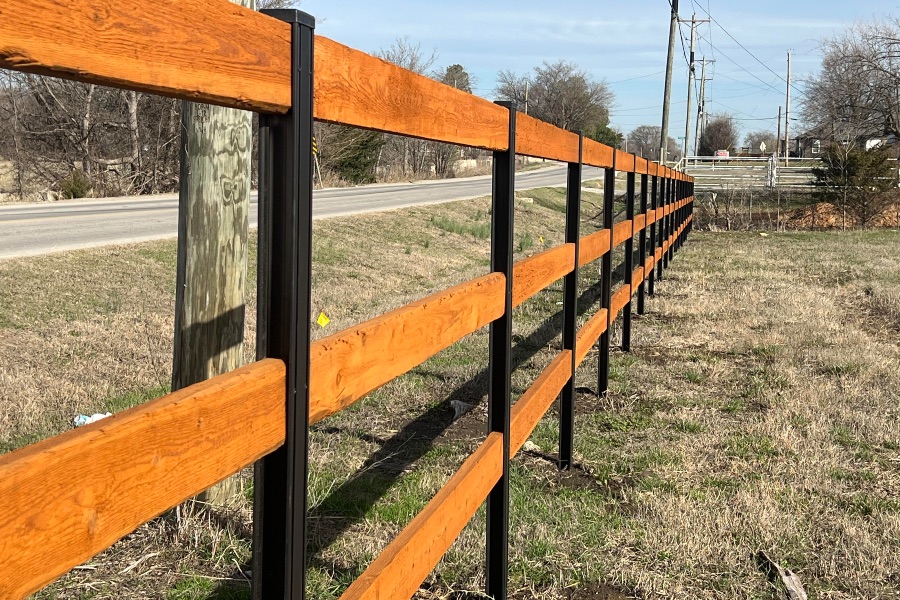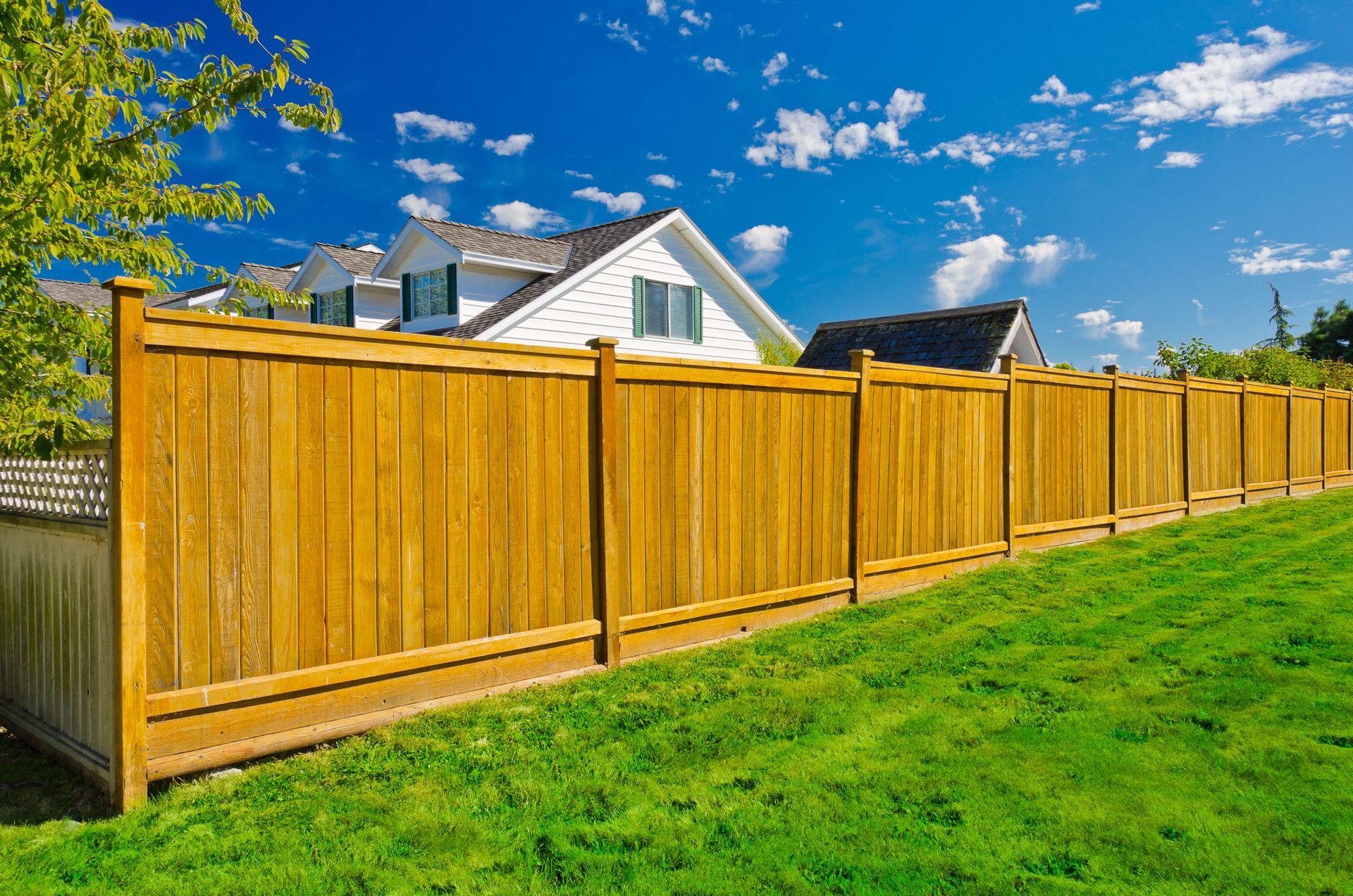All Categories
Featured

Your fencing is a necessary part of your residential property, supplying aesthetic, safety, and privacy allure. There are several techniques you can apply to protect your fencing and lengthen its life.
- Choose the Right Product. The initial step in protecting your fencing from weather-related damages is to select the right product for your climate. Some products are extra resistant to the elements than others.
Wood Fencings: While traditional wood fencings offer a natural, appealing appearance, they are specifically vulnerable to water rot, damage, and bug infestation. Such as cedar or redwood if you pick wood, pick pressure-treated lumber or wood kinds that are more immune to dampness. Plastic Fencings: Vinyl is a low-maintenance option that stands up to fading, cracking, and bending. It's also unsusceptible to rot and bugs, making it excellent for areas with high moisture or exposure to rainfall. Steel Fencings: Aluminum and wrought iron fencings are resistant and sturdy to weathering. Nonetheless, they can corrosion if subjected to moisture for extensive durations. Decide for a powder-coated or galvanized metal fence to minimize the danger of rust. Compound Fences: These are made from a mix of wood fibers and plastic, using the very best of both worlds-- durability and a natural appearance. Compound fences are immune to moisture, fading, and rotting, making them terrific for environments with constant rain or snow. 2. Apply Protective Coatings. No matter the product, using a protective layer can assist safeguard your fence from weather condition damage.

Wooden Fences: A good-quality stain or sealant can aid shield your wood fence from moisture, UV rays, and bugs. These coverings produce a barrier that protects against water from leaking right into the wood and triggering rot. You ought to use a fresh coat of stain or sealer every pair of years, depending upon your climate and the degree of direct exposure to rain and sunlight. Vinyl Fencings: Although vinyl fences are normally immune to weathering, they can still struggle with staining as a result of the sun's UV rays. You can use specific vinyl cleaners or UV protectants to maintain the shade and look of your fence. Metal Fencings: For metal fencings, consider using a rust-resistant guide and a layer of paint designed for outdoor usage. Powder finishing is an additional exceptional choice for metal fences, as it creates a durable, weather-resistant coating that resists corrosion and deterioration. 3. Routine Cleaning and Maintenance. Keeping your fence regularly is important to avoiding damage from the components. Dirt, leaves, and various other debris can develop on your fence, which can cause staining, mold and mildew, and mildew gradually.
Wood Fencings: Tidy your wooden fence every six months with a mild cleaning agent solution or a stress washer (on a reduced setup) to get rid of dirt and crud. Keep an eye out for early signs of rot, particularly at the base of the fence messages where dampness tends to build up. Vinyl Fences: Vinyl fences are easy to clean with soap and water. Make use of a mixture of vinegar and water to gently scrub the impacted areas if you observe mold and mildew or mildew. Avoid severe chemicals that can harm the surface. Metal Fences: Frequently clean metal fencings with a soft fabric or sponge to eliminate rust-causing debris. For functioned iron fences, consider using a rust-inhibiting item to prevent rust. 4. Appropriate Installment and Positioning. Proper installment of your fence can go a lengthy method in protecting it from weather-related damage. Ensure that your fencing is firmly secured which blog posts are established deep sufficient into the ground to protect against shifting during hefty winds or storms. Setting up supporting at key factors can give additional assistance. if your fencing is subject to heavy winds.
Additionally, think about the positioning of your fencing. If possible, plant hedges or trees strategically around your fencing to give some all-natural security from rough winds, intense sunshine, or driving rainfall. Be mindful not to plant also close to the fence, as origins can harm or move articles over time.
- Address Tornado Damages Rapidly. Tornados, especially those with high winds or hail, can cause immediate damage to your fencing. After a storm, evaluate your fence for damaged sections, leaning posts, or fallen particles.
- Winterize Your Fence. Cold temperature levels and ice can be particularly damaging to wood fencings. To avoid this, make sure that the base of your fencing blog posts is raised and not sitting in pooled water.
Conclusion. Weather-related damage is an inevitable part of owning a fence, but with the appropriate preventative measures and normal upkeep, you can substantially expand the life of your fencing. Choose sturdy products fit for your climate, use safety coatings, clean frequently, and make sure correct installation. With these actions, you can safeguard your fencing from the components and maintain its appearance and functionality for several years to come.
Latest Posts
Explore Brake Repair & More: Full Repair Options from Montclare Auto Repair
Published May 23, 25
1 min read
Signs When Your Car Needs Expert Vehicle Service at Montclare Auto Repair
Published May 22, 25
1 min read
Discover the Top Auto Repair Offers in Montclare, Chicago
Published May 21, 25
1 min read
More
Latest Posts
Explore Brake Repair & More: Full Repair Options from Montclare Auto Repair
Published May 23, 25
1 min read
Signs When Your Car Needs Expert Vehicle Service at Montclare Auto Repair
Published May 22, 25
1 min read
Discover the Top Auto Repair Offers in Montclare, Chicago
Published May 21, 25
1 min read